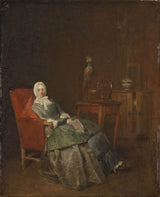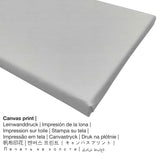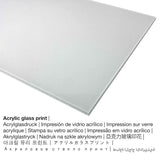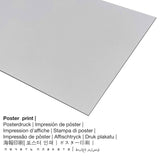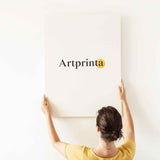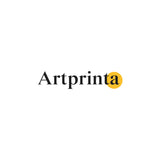Jean-Baptiste-Siméon Chardin - ihe ụtọ ime ụlọ - mbipụta nka mara mma
Ụtụ gụnyere. Mbupu gbakọrọ na ndenye ọpụpụ.
Nweta ihe ebipụta nka kacha amasị gị
Anyị na-enye ụdị nha na ihe dị iche iche maka ngwaahịa ọ bụla. Ị nwere ike ịhọrọ n'ime nhọrọ nhazi ngwaahịa ndị a:
- Mbipụta iko acrylic (nke nwere ezigbo mkpuchi iko): An acrylic glass print, which is often named as a an art print on plexiglass, changes an original work of art into wonderful décor and makes a viable alternative to canvas and aluminidum dibond art prints. The acrylic glass protects your selected fine art print against light and external influences for between 40-60 years.
- Mbipụta ọla (aluminium dibbond): This is a metal print manufactured on aluminium dibond with an outstanding effect of depth. A direct Direct Print on Aluminum Dibond is your ideal introduction to art prints on aluminum. This direct print on Aluminum Dibond is one of the most popular entry-level products and is a truly contemporary way to display art reproductions, because it puts the viewer’s focus on the image.
- Mpempe akwụkwọ mmado ebipụtara na akwa akwa: The Artprinta poster print is a UV printed canvas paper with a nice finish on the surface. Please bear in mind, that depending on the absolute size of the poster we add a white margin of around 2-6cm around the painting, which facilitates the framing with a custom frame.
- Mbipụta kwaaji: The UV printed canvas material applied on a wood frame. Also, a canvas creates a charming and comfy effect. How do I hang a canvas print on my wall? Canvas prints are relatively low in weight. This means, it is easy to hang the Canvas print without the use of extra wall-mounts. A canvas print is suited for any kind of wall.
Nkwupụta iwu: We try all that we can in order to depict our products as exact as possible and to demonstrate them visually in our shop. Nonetheless, the colors of the print products, as well as the printing might differ marginally from the presentation on the screen. Depending on the settings of your screen and the nature of the surface, not all colors can be printed as realistically as the digital version on this website. Since all the art prints are printed and processed by hand, there may also be slight differences in the size and exact position of the motif.
Ama
Ihe osise Ihe ụtọ nke ụlọ e kere nwoke French onye na-ese ihe Jean-Baptiste-Simeon Chardin. Nke mbụ tụrụ nha: Ogologo: 42,5 cm (16,7 ″); Obosara: 35 cm (13,7 ″) Ekebere: Elu: 69 cm (27,1 ″); Obosara: 60 cm (23,6 ″); Omimi: 10 cm (3,9 ″). Mmanụ na kwaaji was applied by the French artist as the technique for the painting. Today, this work of art forms part of the Nationalmuseum Stockholm's digital art collection, which is Sweden's museum of art and design, a Swedish government authority with a mandatet o preserve cultural heritage and promote art, interest in art and knowledge of art. With courtesy of - Nationalmuseum Stockholm na Wikimedia Commons (nwere ikike: ngalaba ọha).The creditline of the artpiece is the following: . Further, the alignment of the digital reproduction is portrait and has a side ratio of 1 : 1.2, which means that the length is 20% shorter than the width. Jean-Baptiste-Siméon Chardin was a male painter of French nationality, whose art style was primarily Baroque. The European artist lived for 80 afọ a mụrụ na 1699 na Paris ma nwụọ n'afọ 1779.
Nkọwa ihe osise
| Aha ọrụ nka: | "Domestic Pleasures" |
| nhazi ọkwa: | sere |
| Ọkara nke ihe osise izizi: | mmanụ na kwaaji |
| Nha izizi: | Ogologo: 42,5 cm (16,7 ″); Obosara: 35 cm (13,7 ″) Ekebere: Elu: 69 cm (27,1 ″); Obosara: 60 cm (23,6 ″); Omimi: 10 cm (3,9 ″) |
| Ụlọ ihe ngosi nka / ebe: | National Museum nke Stockholm |
| Ebe ebe ngosi nka: | Stockholm, Obodo Stockholm, Sweden |
| URL webụ: | National Museum nke Stockholm |
| Ụdị nka nka: | ngalaba ọha |
| Site n'aka: | Nationalmuseum Stockholm na Wikimedia Commons |
Banyere akụkọ
| Nkewa edemede: | nka nka |
| Mmeputakwa: | dijitalụ mmeputakwa |
| Usoro mmepụta: | Mbipụta UV / dijitalụ |
| Mmalite nke ngwaahịa a: | arụpụtara na Germany |
| Ụdị ngwaahịa: | na mmepụta ihe |
| Eji ngwaahịa a chọrọ: | ịchọ mma mgbidi, ihe ndozi ụlọ |
| Ntuziaka onyonyo: | usoro eserese |
| Njikwa oyiyi: | (ogologo: obosara) 1: 1.2 |
| Mmetụta akụkụ: | ogologo bụ 20% mkpụmkpụ karịa obosara |
| Ụdị akwa: | Mbipụta iko acrylic (nke nwere ezigbo mkpuchi iko), mbipụta akwa akwa, mbipụta akwụkwọ mmado (akwụkwọ kwaaji), mbipụta ọla (aluminium dibbond) |
| Mbipụta kanvas (akwa akwa na etiti ihe ndọtị): | 50x60cm - 20x24", 100x120cm - 39x47", 150x180cm - 59x71" |
| Mbipụta iko acrylic (nke nwere ezigbo mkpuchi iko): | 50x60cm - 20x24", 100x120cm - 39x47", 150x180cm - 59x71" |
| Mpempe akwụkwọ mmado (akwụkwọ kwaaji) nha dị iche iche: | 50x60cm - 20x24", 100x120cm - 39x47" |
| Mpempe aluminom (aluminium dibond ihe) nha: | 50x60cm - 20x24", 100x120cm - 39x47" |
| Nhazi mbipụta nka: | enweghị etiti |
Tebụl onye na-ese ihe
| aha: | Jean-Baptiste-Simeon Chardin |
| okike nke onye nka: | nwoke |
| Nationality: | French |
| Ọrụ onye na-ese ihe: | onye na-ese ihe |
| Obodo obibi: | France |
| Ụdị nka: | Baroque |
| Ndụ: | 80 afọ |
| A mụrụ: | 1699 |
| Ebe omuma: | Paris |
| Afọ ọnwụ: | 1779 |
| Nwụrụ na (ebe): | Paris |
© echebe nwebiisinka | Artprinta (www.artprinta.com)

